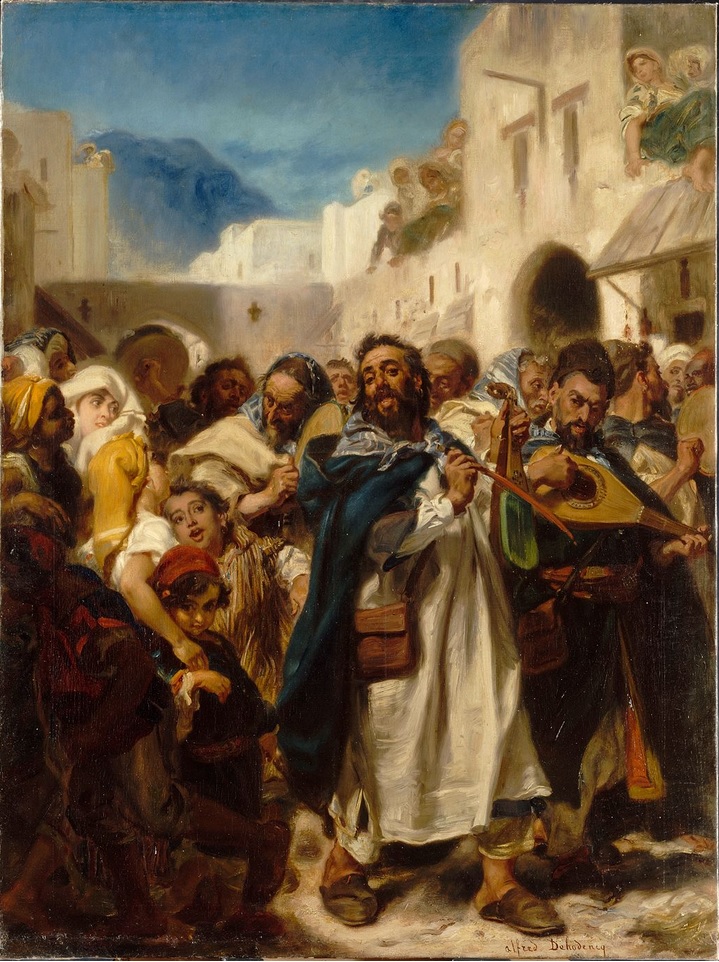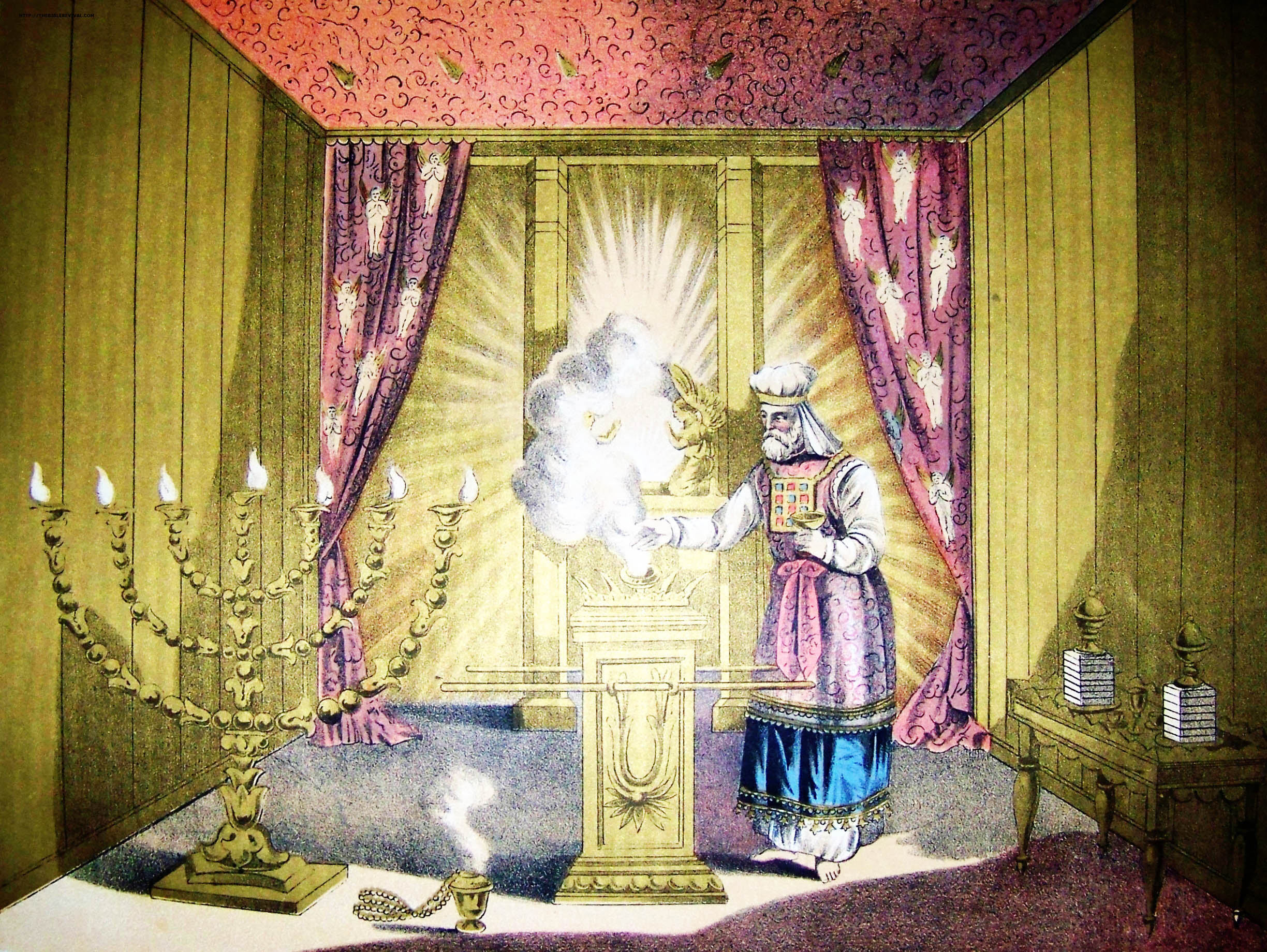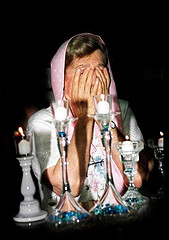|
Yom Kippur
Yom Kippur (; he, יוֹם כִּפּוּר, , , ) is the holiest day in Judaism and Samaritanism. It occurs annually on the 10th of Tishrei, the first month of the Hebrew calendar. Primarily centered on atonement and repentance, the day's observances consist of full fasting and ascetic behavior accompanied by intensive prayer as well as sin confessions (traditionally inside of a synagogue). Alongside the related holiday of Rosh HaShanah, Yom Kippur is one of the two components of the " High Holy Days" of Judaism. Etymology () means "day" in Hebrew and () is translated to "atonement". The common English translation of Yom Kippur is Day of Atonement; however, this translation lacks precision. The name Yom Kippur is based on the Torah verse, "...but on the 10th day of the seventh month it is the day of ''kippurim'' unto you..." The literal translation of ''kippurim'' is cleansing. Yom Kippur is a Jewish day to atone for misdeeds and become cleansed and purified from ... [...More Info...] [...Related Items...] OR: [Wikipedia] [Google] [Baidu] |
Judaism
Judaism ( he, ''Yahăḏūṯ'') is an Abrahamic, monotheistic, and ethnic religion comprising the collective religious, cultural, and legal tradition and civilization of the Jewish people. It has its roots as an organized religion in the Middle East during the Bronze Age. Modern Judaism evolved from Yahwism, the religion of ancient Israel and Judah, by the late 6th century BCE, and is thus considered to be one of the oldest monotheistic religions. Judaism is considered by religious Jews to be the expression of the covenant that God established with the Israelites, their ancestors. It encompasses a wide body of texts, practices, theological positions, and forms of organization. The Torah, as it is commonly understood by Jews, is part of the larger text known as the ''Tanakh''. The ''Tanakh'' is also known to secular scholars of religion as the Hebrew Bible, and to Christians as the "Old Testament". The Torah's supplemental oral tradition is represented by later tex ... [...More Info...] [...Related Items...] OR: [Wikipedia] [Google] [Baidu] |
Jews Praying In The Synagogue On Yom Kippur
''Jews Praying in the Synagogue on Yom Kippur'' was painted by Polish-Jewish artist Maurycy Gottlieb in 1878. It depicts Jews in the midst of the Yom Kippur service, on one of the holiest days of the Jewish calendar. Yom Kippur is the Jewish holiday of repentance, a time for Jews to repent for their sins and reflect on their behaviour in the past and coming year. As Soussloff writes in Jewish Identity in Modern Art History, "Yom Kippur is also the occasion in the Jewish year when the dead are solemnly commemorated (in the service called Yizkor), and Gottlieb has injected into this picture several prominent self-memorials." In his book Painting a People, Ezra Mendelsohn confirms that Gottlieb’s subject in this painting is the Days of Atonement: "Nathan Samuely, who discussed the work with Gottlieb in 1878, does specifically connect it, in his German essay on the artist published in 1885, with Yom Kippur, and informs us that the artist himself had the idea of painting it during th ... [...More Info...] [...Related Items...] OR: [Wikipedia] [Google] [Baidu] |
Synagogue
A synagogue, ', 'house of assembly', or ', "house of prayer"; Yiddish: ''shul'', Ladino: or ' (from synagogue); or ', "community". sometimes referred to as shul, and interchangeably used with the word temple, is a Jewish house of worship. Synagogues have a place for prayer (the main sanctuary and sometimes smaller chapels), where Jews attend religious Services or special ceremonies (including Weddings, Bar Mitzvahs or Bat Mitzvahs, Confirmations, choir performances, or even children's plays), have rooms for study, social hall(s), administrative and charitable offices, classrooms for religious school and Hebrew school, sometimes Jewish preschools, and often have many places to sit and congregate; display commemorative, historic, or modern artwork throughout; and sometimes have items of some Jewish historical significance or history about the Synagogue itself, on display. Synagogues are consecrated spaces used for the purpose of Jewish prayer, study, assembly, ... [...More Info...] [...Related Items...] OR: [Wikipedia] [Google] [Baidu] |
Secular Jewish Culture
Jewish culture is the culture of the Jewish people, from its formation in ancient times until the current age. Judaism itself is not a faith-based religion, but an orthoprax and ethnoreligion, pertaining to deed, practice, and identity. Jewish culture covers many aspects, including religion and worldviews, literature, media, and cinema, art and architecture, cuisine and traditional dress, attitudes to gender, marriage, and family, social customs and lifestyles, music and dance. Some elements of Jewish culture come from within Judaism, others from the interaction of Jews with host populations, and others still from the inner social and cultural dynamics of the community. Before the 18th century, religion dominated virtually all aspects of Jewish life, and infused culture. Since the advent of secularization, wholly secular Jewish culture emerged likewise. History There has not been a political unity of Jewish society since the united monarchy. Since then Israelite populations ... [...More Info...] [...Related Items...] OR: [Wikipedia] [Google] [Baidu] |
Temple In Jerusalem
The Temple in Jerusalem, or alternatively the Holy Temple (; , ), refers to the two now-destroyed religious structures that served as the central places of worship for Israelites and Jews on the modern-day Temple Mount in the Old City of Jerusalem. According to the Hebrew Bible, the First Temple was built in the 10th century BCE, during the reign of Solomon over the United Kingdom of Israel. It stood until , when it was destroyed during the Babylonian siege of Jerusalem. Almost a century later, the First Temple was replaced by the Second Temple, which was built after the Neo-Babylonian Empire was conquered by the Achaemenid Persian Empire. While the Second Temple stood for a longer period of time than the First Temple, it was likewise destroyed during the Roman siege of Jerusalem in 70 CE. Projects to build the hypothetical " Third Temple" have not come to fruition in the modern era, though the Temple in Jerusalem still features prominently in Judaism. Today, the Temple M ... [...More Info...] [...Related Items...] OR: [Wikipedia] [Google] [Baidu] |
Kohen Gadol
High Priest ( he, כהן גדול, translit=Kohen Gadol or ; ) was the title of the chief religious official of Judaism from the early post-Exilic times until the destruction of the Second Temple in Jerusalem by the Romans in 70 CE. Previously, in the Israelite religion, including during the time of the kingdoms of Israel and Judah, other terms were used to designate the leading priests; however, as long as a king was in place, the supreme ecclesiastical authority lay with him. The official introduction of the term "high priest" went hand-in-hand with a greatly enhanced ritual and political significance bestowed upon the chief priest of the Israelites in the post-Exilic period, especially from 411 BCE onward due to the religious transformations brought about during the time of the Babylonian captivity and due to the lack of a Jewish king and kingdom. The high priests belonged to the Jewish priestly families that trace their paternal line back to Aaron—the first high prie ... [...More Info...] [...Related Items...] OR: [Wikipedia] [Google] [Baidu] |
Ne'ilah
Ne'ila ( he, נעילה, lit=locking), the ''concluding service'', is a special Jewish prayer service that is held only on Yom Kippur. It is the time when final prayers of repentance are recited at the closing of Yom Kippur. Neilah marks the fifth Amidah of Yom Kippur, the only such occasion in the Hebrew calendar in which there are so many services. Contents In the Ashkenazic and Hassidic rites, Ne'ila begins with of Ashrei, Uva L'Tzion, both of which are postponed from Mincha when they are normally recited on Shabbat and Festivals). In most other rites, Ashrei and Uva L'Tzion are recited as normal at Mincha, and Ashrei alone is repeated at the beginning of Ne'ila. This is followed by Amidah with Selichot and an abbreviated Vidui; in the Ashkenazic rite, it concludes with Avinu Malkeinu. In Sephardic practice, it begins with the hymn El Nora Alila. The shofar is blown and the song ''L'Shana Haba'ah'' is sung at the end of Ne'ila. In the Eastern Ashkenazic rite, the ark ''(Aro ... [...More Info...] [...Related Items...] OR: [Wikipedia] [Google] [Baidu] |
Jewish Holidays
Jewish holidays, also known as Jewish festivals or ''Yamim Tovim'' ( he, ימים טובים, , Good Days, or singular , in transliterated Hebrew []), are holidays observed in Judaism and by JewsThis article focuses on practices of mainstream Rabbinic Judaism. Karaite Judaism#The calendar, Karaite Jews and Samaritans#Samaritanism, Samaritans also observe the biblical festivals, but not in an identical fashion and not always at exactly the same time. throughout the Hebrew calendar. They include religious, cultural and national elements, derived from three sources: biblical ''mitzvot'' ("commandments"), rabbinic mandates, and the history of Judaism and the State of Israel. Jewish holidays occur on the same dates every year in the Hebrew calendar, but the dates vary in the Gregorian. This is because the Hebrew calendar is a lunisolar calendar (based on the cycles of both the sun and moon), whereas the Gregorian is a solar calendar. General concepts Groupings Certain term ... [...More Info...] [...Related Items...] OR: [Wikipedia] [Google] [Baidu] |
Shabbat
Shabbat (, , or ; he, שַׁבָּת, Šabbāṯ, , ) or the Sabbath (), also called Shabbos (, ) by Ashkenazim, is Judaism's day of rest on the seventh day of the week—i.e., Saturday. On this day, religious Jews remember the biblical stories describing the creation of the heaven and earth in six days and the redemption from slavery and The Exodus from Egypt, and look forward to a future Messianic Age. Since the Jewish religious calendar counts days from sunset to sunset, Shabbat begins in the evening of what on the civil calendar is Friday. Shabbat observance entails refraining from work activities, often with great rigor, and engaging in restful activities to honour the day. Judaism's traditional position is that the unbroken seventh-day Shabbat originated among the Jewish people, as their first and most sacred institution. Variations upon Shabbat are widespread in Judaism and, with adaptations, throughout the Abrahamic and many other religions. According to '' ... [...More Info...] [...Related Items...] OR: [Wikipedia] [Google] [Baidu] |
Vidui
In Judaism, confession ( he, וִדּוּי, vīddūy) is a step in the process of atonement during which a Jew admits to committing a sin before God. In sins between a Jew and God, the confession must be done without others present (The Talmud calls confession in front of another a show of disrespect). On the other hand, confession pertaining to sins done to another person are permitted to be done publicly, and in fact Maimonides calls such confession "immensely praiseworthy". The confession of a sin in itself does not bring immediate forgiveness, but rather it marks a point in time after which a person's demonstration of the recognition and avoidance of similar future transgressions show whether they have truly recovered from the sin and therefore whether they deserve forgiveness for it. The Hebrew Bible ''Vidui'' is not found as a noun in the Hebrew Bible, but the concept of confession and the hithpael verb form of ''yadah'' (ידה) – from which ''vidui'' is derived – ... [...More Info...] [...Related Items...] OR: [Wikipedia] [Google] [Baidu] |
Book Of Life
In Christianity and Judaism, the Book of Life (Hebrew: ספר החיים, transliterated ''Sefer HaChaim''; ''Biblíon tēs Zōēs'') is the book in which God records, or will record, the names of every person who is destined for Heaven and the World to Come. According to the Talmud it is opened on Rosh Hashanah, as is its analog for the wicked, the Book of the Dead. For this reason, extra mention is made for the Book of Life during Amidah recitations during the Days of Awe, the ten days between Rosh Hashanah, the Jewish new year, and Yom Kippur, the day of atonement (the two High Holidays, particularly in the prayer Unetaneh Tokef). In the Hebrew Bible In the Hebrew Bible, the Book of Life records forever all people considered righteous before God. To be blotted out of this book signifies death. It is with reference to the Book of Life that the holy remnant is spoken of as being written unto life in Jerusalem; compare also Book of Ezekiel 9:4, where one of the six heavenl ... [...More Info...] [...Related Items...] OR: [Wikipedia] [Google] [Baidu] |
Torah
The Torah (; hbo, ''Tōrā'', "Instruction", "Teaching" or "Law") is the compilation of the first five books of the Hebrew Bible, namely the books of Genesis, Exodus, Leviticus, Numbers and Deuteronomy. In that sense, Torah means the same as Pentateuch or the Five Books of Moses. It is also known in the Jewish tradition as the Written Torah (, ). If meant for liturgic purposes, it takes the form of a Torah scroll (''Sefer Torah''). If in bound book form, it is called '' Chumash'', and is usually printed with the rabbinic commentaries (). At times, however, the word ''Torah'' can also be used as a synonym for the whole of the Hebrew Bible or Tanakh, in which sense it includes not only the first five, but all 24 books of the Hebrew Bible. Finally, Torah can even mean the totality of Jewish teaching, culture, and practice, whether derived from biblical texts or later rabbinic writings. The latter is often known as the Oral Torah. Representing the core of the Jewish spir ... [...More Info...] [...Related Items...] OR: [Wikipedia] [Google] [Baidu] |
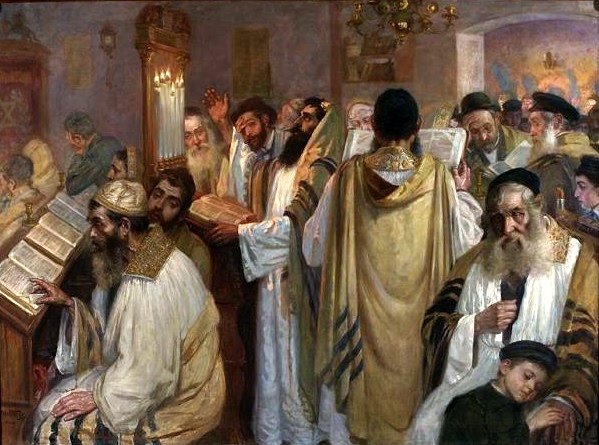
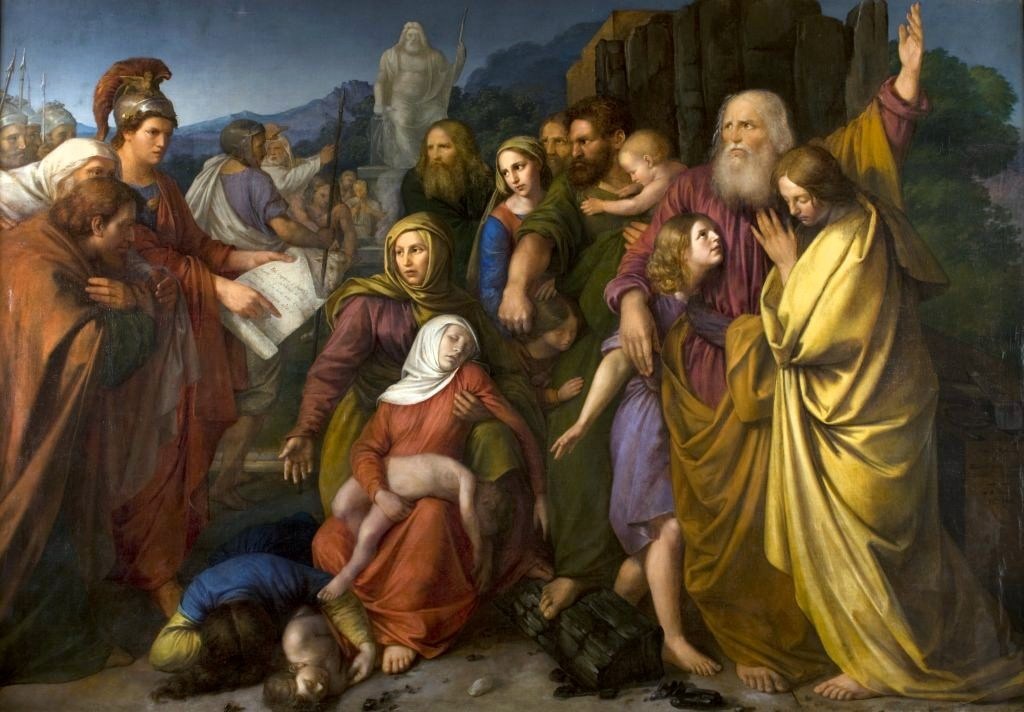
.jpg)
